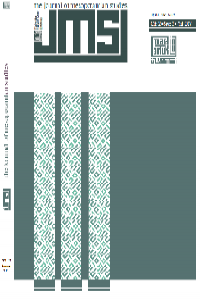Comparisons in Onomatopoeia between Arabic and Kurdish
Abstract
The
results of this research can be summarized in terms of the semantic comparison
between the Kurdish and Arabic languages, to simulate the sounds, both at the
lexical and linguistic levels, in which the number of nouns that indicate
sounds, whether they are derived from the elements of nature, of nature, animal
and human, or from the friction of objects, In some detail as and quality. At
the linguistic level, they were found to be similar in their dependence on the
phenomenon of verbal and vocal repetition. However, these two languages did
not show serious interest in applying the rules of voice simulation in their
language to new names, especially on devices related to musical instruments,
devices with functions or audio features. Unlike the English language, which
was keen to develop vocabulary to simulate the majority of the voices of modern
innovations, but English at the linguistic level devoid of the rules of the
regular in this simulation, unlike the Kurdish language and Arabic.
References
- - ابن جني ,أبو الفتح عثمان. تحقيق محمد علي النجار. (1952): الخصائص. دار الكتب المصرية، القاهرة , ج2, 152 - 168
- - ابن سيده, أبو الحسن علي بن إسماعيل النحوي اللغوي الأندلسي. تحقيق: خليل إبراهم جفال . (1996) . المخصيص في اللغة. دار النشر : دار إحياء التراث العربي - بيروت.
Abstract
References
- - ابن جني ,أبو الفتح عثمان. تحقيق محمد علي النجار. (1952): الخصائص. دار الكتب المصرية، القاهرة , ج2, 152 - 168
- - ابن سيده, أبو الحسن علي بن إسماعيل النحوي اللغوي الأندلسي. تحقيق: خليل إبراهم جفال . (1996) . المخصيص في اللغة. دار النشر : دار إحياء التراث العربي - بيروت.
Details
| Subjects | Linguistics |
|---|---|
| Journal Section | Articles |
| Authors | |
| Publication Date | August 21, 2017 |
| Submission Date | March 27, 2017 |
| Published in Issue | Year 2017 Volume: 2 Issue: 2 |

The Journal of Mesopotamian Studies (JMS) is licensed through Attribution-NonCommercial 4.0 International.

